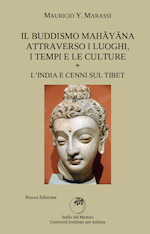at the closing ceremony of the ango [training period for the Sōtō Shū clergy] held at Sōtō Zen temple “La Gendronnière”
15 September – 10 December 2007
[This meeting, called “Meeting of teachers” took place in the great hall of the main building of La Gendronnière, near Blois, in France, between 9:00 and around 11,00 a.m. on Monday, December 10th 2007. It had the aim to take stock of the experience made during the ango period that had just ended and to discuss carrying out similar events in the future .]
The meeting was attended by:
Imamura Genshu, director of the Centre Européen du Bouddisme Zen Soto (Yoroppa Kokusai Fukyo Sokan), docho of the ango, Japan.
Akiyama Tozen, kokusai fukyoshi currently residing at Santa Rosa (?) California (USA) – dokan of the ango, Japan.
Yokoyama Taiken, administrator of the Centre Européen du Bouddisme Zen Soto – kanshi of the ango, Japan.
Raphael Doko Triet, dendo kyoshi, president of the AZI and of the French Buddhist Union and director of the Seikyuji temple in Spain as well as of Zen communities in Portugal, Spain and France.
Pierre Dokan Crepon, dendo kyoshi, director of the zen Centre of Vannes, France.
Jean-Pierre Taiun Faure, dendo kyoshi, director of the Kanshoji temple in Limoges, France.
Denis Kengan Robert, dendo kyoshi, director of the Doshinji temple at Blois, France.
Katia Koren Robel, dendo kyoshi, Paris, France.
Giuseppe Jiso Forzani, kokusai fukyoshi, representing the Stella del Mattino, Italy.
Junko san, interpret, Kanshoji temple, Limoges, France.
The meeting was also attended by two Japanese officials of the Tokyo Soto Shu Shumucho.
Daido Massimo Strumia and Yushin Mauricio Marassi did not attend the meeting, but share the views expressed in Jiso’s presentation. In fact, these views had been agreed upon by all three, before his departure for France
He starts by underlining the general satisfaction with the outcome of the event, by sharing the conviction that it has been a historic event, and by praising the spirit of harmony (wago) that every participants has experienced and has commented on. For this very reason – because this was a momentous event and because of the harmony that has accompanied it throughout its unfolding– he considers it his duty to express openly his reservations, convinced that they constitute a concrete contribution to the work of all involved.
He has not accepted the invitation to partecipate in the ango as an instructor because he does not support its underlying philosophy, but he believes that critical comments are an essential contribution to the general reflection on this experience in view of future initiatives in this field. He also believes that harmony does not mean uncritical unanimity of consensus views but results from a free expression of opinions, when the intention is not to create conflicts, but to strengthen cooperation. For this very reason he has decided to attend this meeting: to express publicly his point of view, so that this may constitute an issue of public interest and discussion. The success of the first ango has been duly recorded, one must now think of the future.
The critical comments are the following three:
1. the overall setup, the organization and the management of the ango have all been planned and carried out by the Japanese and according to Japanese traditional practices. Despite the widespread awareness that this event would be critical for the future of Zen in Europe, the cooperation between Japanese and Europeans has been weak, not to say entirely absent. This failure of communication and cooperation does not bode well for the future. In Japan, what matters is to arrive at a consensus on a programme that has been designed beforehand. The European soul could not differ more. Here consensus must be reached through an open and direct debate. One that is not aware of this value and fails to take it into account in the decision-making process may pretend he operates in Europe and for Europe, but in actuality, he does not. Furthermore, the European Office responsible for the organization of the ango currently comprises individuals, (Imamura and Taiken) who know non-Japanese, including European, reality and who have often shown to be sensitive to the distintive features of European cultures. Their assignment is about to end, and, starting next year, they will be replaced by other Japanese officials who know only Japanese reality. We will be even more depend on persons who make decisions on European Zen and yet are not familiar with European reality.
2. The model adopted for this ango is that of the Japanese senmon sodo. While it may be suitable in Japan for the Japanese Sotoshu, it is not for Europe. Inspite of the fact that the Paris meeting of May 2007 recommended to postpone holding it at least until 2008, this ango has been hastily organized. This shows that decisions are taken elsewhere and that the capacity of the Europeans to influence them is severely constrained. The Sotoshu shumucho cannot but riproduce the traditional models, developed to respond to the demand of the Japanese and have no homologue in Europe. It cannot be believed that it is appropriate to transplant in Europe the Japanese Sotoshu system, based on the danka and on the tradition whereby sons inherit temples from their fathers. In Japan, the monks-to be are born in a temple, and is is not inconceivable that this type of direct immersion in the system may help train them for this specific role. Thus, one year sodo training may be sufficient to confirm and consolidate the training already undergone since childhood. But in Europe all this does not exist — nor should one hope that it may be brought into existence in the future.
3. It is therefore legittimate to ask oneself what is the meaning of this ango. It cannot be to certify that those who have taken part in it have gained capacity to “teach zen”. In a few months, it is impossible to educate anyone to a “zen life”. On the basis of what criteria can one be judged to possess the maturity needed to teach zen? If one really wants to carry out ango, one should go ahead, but without handing out any kind of certificate. Even more: in Japan there are several grades and levels that monks priests have reached on account of the length of their participation in the sodo programme or of other criteria. These grades and levels should not be imported into Europe. Let us not set up a hierarchical structure for the clergy. Insofar as Europe is concerned, any kind of monastic clerical ranking should be not even be considered.
In conclusion, we are invited to reflect on the fact that, as many others have already remarked in another opportunity, the commitment of many Europeans to zen practice can also contribute to the renewal of Japanese zen. Therefore, instead of aping slavishly traditional practices, we should try and find new ways to interact.
These comments should be understood for what they are, positive contributions and not criticisms for the sake of criticizing.
Footnote: during the closing ceremony, a certificate of attendance is given to the 11 students who have taken part in the training – the diploma is written in Japanese, read in Japanese and read out again in English by an interpreter –. The date on the certificate is Dec. 15th, but, because of some participants’ previous engagements, the ceremony actually takes place on Dec. 10th. So one hears the queer expression “today, Dec. 15th..” while “today” is Dec. 10th – and, even more amusing, the year is not read out as 2007, according to the Gregorian calendar in use here for the past two millennia or so, but as “Heisei, year 19”, which is the the current date in Japanese era name.
Se volete, lasciate un commento.
You must be logged in to post a comment.







